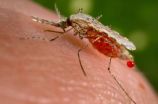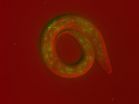(Press-News.org) A cross-disciplinary team is calling for public discussion about a potential new way to solve longstanding global ecological problems by using an emerging technology called "gene drives." The advance could potentially lead to powerful new ways of combating malaria and other insect-borne diseases, controlling invasive species and promoting sustainable agriculture.
Representing the Wyss Institute for Biologically Inspired Engineering at Harvard University, Harvard Medical School, Harvard School of Public Health, the Massachusetts Institute of Technology (MIT), Boston University, the Woodrow Wilson Center, and Arizona State University, the team includes scientists working in disciplines ranging from genome engineering to public health and ecology, as well as risk and policy analysis.
Engineered gene drives are genetic systems that circumvent traditional rules of sexual reproduction and greatly increase the odds that the drive will be passed on to offspring. This enables the spread of specified genetic alterations through targeted wild populations over many generations. They represent a potentially powerful tool to confront regional or global challenges, including control of invasive species and eradication of insect-borne diseases such as malaria and dengue.
The idea is not new, but the Harvard-based researchers have now outlined a technically feasible way to build gene drives that potentially could spread almost any genomic change through populations of sexually reproducing species.
"We all rely on healthy ecosystems and share a responsibility to keep them intact for future generations," said Kevin Esvelt, PhD, Wyss Institute Technology Development Fellow and lead author of two papers published this week. "Given the broad potential of gene drives to address ecological problems, we hope to initiate a transparent, inclusive and informed public discussion—well in advance of any testing—to collectively decide how we might use this technology for the betterment of humanity and the environment."
Following discussion of the technology's widespread implications at an NSF-sponsored workshop organized by the Woodrow Wilson Center and MIT in January 2014, the team wrote two related papers. The first, published in eLife, describes the proposed technical methods of building gene drives in different species, defines their theoretical capabilities and limitations, and outlines possible applications. The second, featured in Science, provides an initial assessment of potential environmental and security effects, an analysis of regulatory coverage and recommendations to ensure responsible development and testing prior to use.
The new technical work in eLife builds upon research by Austin Burt of Imperial College London, who, more than a decade ago, first proposed using a type of gene drive based on cutting DNA to alter populations. The authors note that the versatile gene editing tool called CRISPR, which was recently co-developed by some of the same researchers at Harvard and the Wyss Institute and makes it possible to precisely insert, replace and regulate genes, now makes it feasible to create gene drives that work in many different species.
"Our proposal represents a potentially powerful ecosystem management tool for global sustainability, but one that carries with it new concerns, as with any emerging technology," said Wyss Core Faculty member George Church, PhD, a coauthor on both publications. Church is also a professor of genetics at Harvard Medical School, and professor of health sciences and technology at Harvard and MIT.
Esvelt noted that the genomic changes made by gene drives should be reversible. The team has outlined in the eLife publication numerous precautionary measures intended to guide the safe and responsible development of gene drives, many of which were not possible with earlier technologies.
"If the public ever considers making use of a gene drive, we will need to develop appropriate safeguards. Ensuring that we have a working reversal drive on hand to quickly undo the proposed genomic change would be one such precaution," he said.
Because the drives can spread traits only over generations, they will be most effective in species that reproduce quickly or can be released in large numbers. For insects, it could take only a couple of years to see a desired change in the population at large, while slower-reproducing organisms would require much longer. Altering human populations is not feasible because it would require many centuries.
Gene drives could strike a powerful blow against malaria by altering mosquito populations so that they can no longer spread the disease, which kills 650,000 people every year and sickens hundreds of millions. They might also be used to rid local environments of invasive species or to pave the way toward more sustainable agriculture by reversing mutations that allow particular weed species, such as horseweed, to resist herbicides that are important for no-till farming.
The innovative nature of gene drives poses regulatory challenges. "Simply put, gene drives do not fit comfortably within existing U.S. regulations and international conventions," said political scientist Kenneth Oye, PhD, author of the Science paper and director of the MIT Program on Emerging Technologies. "For example, animal applications of gene drives would be regulated by the FDA as veterinary medicines. Potential implications of gene drives fall beyond the purview of the lists of bacteriological and viral agents that now define security regimes. We'll need both regulatory reform and public engagement before we can consider beneficial uses. That is why we are excited about getting the conversation on gene drives going early."
"Many different groups and the interested public will need to come together to ensure that gene drives are developed and used responsibly," said James P. Collins, PhD, an evolutionary ecologist at Arizona State University and senior author of the Science paper. Collins was formerly the assistant director for biological sciences at the National Science Foundation.
"Understanding how populations and ecosystems will respond to different alterations and addressing potential security concerns will require sustained multidisciplinary work by teams of biological engineers, ecologists, instrumentation specialists, social scientists and the public," Collins said. "The eLife and Science articles provide a model for the next steps that need to be taken."
INFORMATION:
New potential way to control spread of insect-borne disease
Cross-disciplinary team launches public conversation about new way to manage ecosystems
2014-07-17
ELSE PRESS RELEASES FROM THIS DATE:
In development, it's all about the timing
2014-07-17
Cold Spring Harbor, NY – Closely related organisms share most of their genes, but these similarities belie major differences in behavior, intelligence, and physical appearance. For example, we share nearly 99% of our genes with chimps, our closest relatives on the great "tree of life." Still, the differences between the two species are unmistakable. If not just genes, what else accounts for the disparities? Scientists are beginning to appreciate that the timing of the events that happen during development plays a decisive role in defining an organism, which may help to ...
Viral relics show cancer's 'footprint' on our evolution
2014-07-17
Viral relics show cancer’s ‘footprint’ on our evolution Cancer has left its ‘footprint’ on our evolution, according to a study which examined how the relics of ancient viruses are preserved in the genomes of 38 mammal species.
Viral relics are evidence of the ancient battles our genes have fought against infection. Occasionally the retroviruses that infect an animal get incorporated into that animal’s genome and sometimes these relics get passed down from generation to generation – termed ‘endogenous retroviruses’ (ERVs). Because ERVs may be copied to other parts of the ...
When is a molecule a molecule?
2014-07-17
Using ultra-short X-ray flashes, an international team of researchers watched electrons jumping between the fragments of exploding molecules. The study reveals up to what distance a charge transfer between the two molecular fragments can occur, marking the limit of the molecular regime. The technique used can show the dynamics of charge transfer in a wide range of molecular systems, as the scientists around Dr. Benjamin Erk and Dr. Daniel Rolles of DESY and Professor Artem Rudenko of Kansas State University report in the scientific journal Science. Such mechanisms play ...
Pitt-led study suggests cystic fibrosis is 2 diseases, 1 doesn't affect lungs
2014-07-17
PITTSBURGH, July 17, 2014 – Cystic fibrosis (CF) could be considered two diseases, one that affects multiple organs including the lungs, and one that doesn't affect the lungs at all, according to a multicenter team led by researchers at the University of Pittsburgh School of Medicine. The research, published online today in PLOS Genetics, showed that nine variants in the gene associated with cystic fibrosis can lead to pancreatitis, sinusitis and male infertility, but leave the lungs unharmed.
People with CF inherit from each parent a severely mutated copy of a gene ...
Scientists find protein-building enzymes have metamorphosed & evolved new functions
2014-07-17
LA JOLLA, CA AND JUPITER, FL—Scientists at The Scripps Research Institute (TSRI) and Hong Kong University of Science and Technology (HKUST) and their collaborators have found that ancient enzymes, known for their fundamental role in translating genetic information into proteins, evolved myriad other functions in humans. The surprising discovery highlights an intriguing oddity of protein evolution as well as a potentially valuable new class of therapeutic proteins and therapeutic targets.
"These new protein variants represent a previously unrecognized layer of biology—the ...
A new stable and cost-cutting type of perovskite solar cell
2014-07-17
Perovskite solar cells show tremendous promise in propelling solar power into the marketplace. The cells use a hole-transportation layer, which promotes the efficient movement of electrical current after exposure to sunlight. However, manufacturing the hole-transportation organic materials is very costly and lack long term stability. Publishing in Science, a team of scientists in China, led by Professor Hongwei Han in cooperation with Professor Michael Grätzel at EPFL, have developed a perovskite solar cell that does not use a hole-transporting layer, with 12.8% conversion ...
Scientists complete chromosome-based draft of the wheat genome
2014-07-17
MANHATTAN, Kansas — Several Kansas State University researchers were essential in helping scientists assemble a draft of a genetic blueprint of bread wheat, also known as common wheat. The food plant is grown on more than 531 million acres around the world and produces nearly 700 million tons of food each year.
The International Wheat Genome Sequencing Consortium, which also includes faculty at Kansas State University, recently published a chromosome-based draft sequence of wheat's genetic code, which is called a genome. "A chromosome-based draft sequence of the hexaploid ...
Ultrafast X-ray laser sheds new light on fundamental ultrafast dynamics
2014-07-17
MANHATTAN, Kansas — Ultrafast X-ray laser research led by Kansas State University has provided scientists with a snapshot of a fundamental molecular phenomenon. The finding sheds new light on microscopic electron motion in molecules.
Artem Rudenko, assistant professor of physics and a member of the university's James R. Macdonald Laboratory; Daniel Rolles, currently a junior research group leader at Deutsches Elektronen-Synchrotron in Hamburg, Germany, who will be joining the university's physics department in January 2015; and an international group of collaborators ...
No evidence that California cellphone ban decreased accidents, says Colarado University Boulder researcher
2014-07-17
In a recent study, a researcher at the University of Colorado Boulder found no evidence that a California ban on using hand-held cellphones while driving decreased the number of traffic accidents in the state in the first six months following the ban.
The findings, published in the journal Transportation Research Part A: Policy and Practice, are surprising given prior research that suggests driving while using a cellphone is risky. For example, past laboratory studies have shown that people who talk on a cellphone while using driving simulators are as impaired as people ...
Peering into giant planets from in and out of this world
2014-07-17
Lawrence Livermore scientists for the first time have experimentally re-created the conditions that exist deep inside giant planets, such as Jupiter, Uranus and many of the planets recently discovered outside our solar system.
Researchers can now re-create and accurately measure material properties that control how these planets evolve over time, information essential for understanding how these massive objects form. This study focused on carbon, the fourth most abundant element in the cosmos (after hydrogen, helium and oxygen), which has an important role in many types ...
LAST 30 PRESS RELEASES:
Climate extremes triggered rare coral disease and mass mortality on the Great Barrier Reef
Direct observation reveals “two-in-one” roles of plasma turbulence
Humans rank between meerkats and beavers in monogamy ‘league table’
US fossil reveals early mass-burial event and ancient microbial attack
Sedative choice could improve outcomes for breathing tube patients
New superconducting thin film for quantum computer chips
Simulations reveal protein "dynamin" constricts cell membranes by loosening its grip
Nearly 1 in 5 UK emergency department patients cared for in corridors/waiting rooms
Heavy energy drink intake may pose serious stroke risk, doctors warn
Violence against women and children among top health threats: New global study reveals disease burden far larger than previously estimated
Predicting who is at risk of developing type 1 diabetes, as new drugs now available
New gene-mapping method unlocks hidden drivers of cancer
Ocean current and seabed shape influence warm water circulation under ice shelves
Call to increase funding for ‘invisible’ Deaf victim-survivors of domestic abuse
University of Maryland School of Medicine names distinguished scientist and academic leader Gerald M. Wilson, PhD, as Chair of the Department of Biochemistry and Molecular Biology
Receptors in mammary glands make livestock and humans inviting hosts for avian flu
Icy hot plasmas
Treating adults with autism: Maryland Clinical Center offers national blueprint for care after pediatric transition
University of Phoenix College of Doctoral Studies releases white paper on reclaiming control to build workforce resilience
NCCN Summit seeks to improve care for veterans and first responders with cancer from line-of-duty exposure
ERC Consolidator Grant for soft robotics researcher
Dual-action arts and wellbeing program transforms dementia care
The global plastic waste trade contributes to coastal litter in importing countries, study shows
UT Dallas partners with Tech Mahindra on AI innovation
Blinking less could signal the brain is working harder to listen, Concordia study shows
Male bonobos track females’ reproductive cycle to maximize mating success
New report outlines science priorities for human Mars exploration
Want to curb cannabis-related crashes? Don’t forget older adults, study finds
Expectant management vs medication for patent ductus arteriosus in preterm infants
Pew funds 7 new biomedical research collaborations
[Press-News.org] New potential way to control spread of insect-borne diseaseCross-disciplinary team launches public conversation about new way to manage ecosystems



